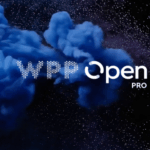By Megan Poinski,
AI chatbots are not created equal. Chatbot developers at competing companies often place a different emphasis on what gets suggested, the sources that are used, and how they intend the user to act on the information presented. In a new report, SEO consulting firm BrightEdge dove into the differences between Google’s AI Mode and ChatGPT. While both gave similar responses to basic comparison questions, they took different tactics when users asked for actions.
“AI search is no longer one thing—it’s splitting into at least two distinct philosophies,” BrightEdge founder and CEO Jim Yu says in the report.
When asked for advice to accomplish a certain task, BrightEdge found that Google tends to surface more things to read and learn from. ChatGPT, meanwhile, often suggests tools and apps to do the task. For example, with a prompt asking how to find a doctor, Google provided directions to a hospital. ChatGPT suggested users try Zocdoc, an app with medical professional listings and information. When asked how to learn Python, Google directs users to GitHub and Medium blogs, while ChatGPT suggests online course site Udemy. And a query on how to make a budget has Google sending users to NerdWallet research and blog posts, while ChatGPT suggests financial apps including Mint and YNAB.
BrightEdge also looked into the differences between results from Google’s AI Overviews—the curated information that shows up at the top of several search result pages—and Google AI Mode—the new button to the right side of the search bar. AI Overviews are constantly changing, but showcase brands in 43% of queries. They also can include 20 or more inline citations. AI Mode, on the other hand, surfaces brands in 90% of its responses, and it’s 3.8 times more likely to feature a unique brand.
What does all of this mean for marketers? As a practical matter, you should continue to hone your AI strategy. It’s time to go deeper than just having content. How does your content show up in an AI search, and what do you want users to do once they find it? Should you concentrate on broad content that helps others learn, actionable solutions, or both? It’s also important to remember that the number of people searching on a particular platform can shift. Search leader Google is quickly rolling out AI Overviews, but AI Mode may become more of a default option. And ChatGPT could see its search fortunes grow through strong performance or a well-placed agreement with an operating system, browser or device.
Regardless of how people find content online, once it’s out there, it can serve as content for everyone in the world—part of a global content strategy. There are many nuances between a winning global strategy and a successful local one. Nataly Kelly, CMO at market research platform Zappi, recently co-authored a book about it with Katherine Melchior Ray titled Brand Global, Adapt Local: How to Build Brand Value Across Cultures. I talked to Kelly about the two strategies. An excerpt from our conversation is later in this newsletter.





